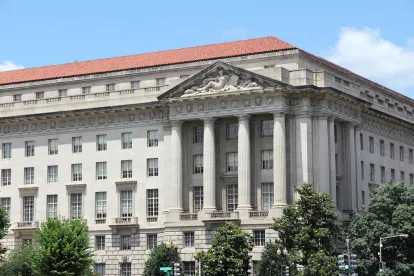Introduction
Five years after originally consulting the public, the Law Commission has recently published its report on reforming the common law criminal offences of public nuisance and outraging public decency. This note focuses on the proposed reforms to the offence of public nuisance.
Public nuisance is unusual in so far as it is both a criminal offence and a cause of action in tort. It’s fair to say that public nuisance has divided opinion (at least in its criminal form) for many years; whilst its supporters value its elasticity and ability to address diverse environmental issues, its detractors contend that it is so nebulous that it runs contrary to modern notions of certainty in criminal law. Certainly, public nuisance has encompassed a wide range of behaviours, from activities which directly impact upon the environment (such as depositing waste on land, as in Attorney General v. Tod Heatley [1897] 1 Ch 560) to anti-social behaviour (such as disrupting sporting events).
Retention
As a preliminary point, the report advocates the retention of the offence of public nuisance. Critics of the offence point out that behaviour that would constitute a public nuisance may generally be prosecuted under other legislation, such as the Environmental Permitting (England and Wales) Regulations 2010 or the Environmental Protection Act 1990 (especially, the provisions relating to statutory nuisance under Part III). However, the Law Commission considered that the offence of public nuisance should be kept because it complements these more specific offences by acting as a stop-gap to cover any lacunae in their coverage.
Codification
As a general point, and in keeping with the Law Commission’s attitude towards the criminal law, the report recommends that the offence should be codified as a statute so that potential offenders will, in future, have clear notice as to what behaviour is forbidden and what the consequences will be.
Elements of the Offence
The Commission was clearly influenced by the comments of Lord Bingham in R v. Rimmington and R v. Goldstein [2005] UKHL 63 that “no one should be punished under a law unless it is sufficiently clear and certain to enable him to know what conduct is forbidden before he does it; and no one should be punished for any act which was not clearly and ascertainably punishable when the act was done”.
Actus Reus
In terms of the external elements for the offence, the report recommends that the offence should consist of:
-
voluntary conduct by the defendant (including omissions, where the defendant is under a duty at common law or by statute);
-
which causes:
-
serious harm to members of the general public or a section of it; or
-
obstruction to the public or a section of it in the exercise or enjoyment of rights common to the public at large.
‘Serious harm’ would be where a person suffers:
-
death, personal injury or disease;
-
loss or damage to property; or
-
serious distress, annoyance, inconvenience or loss of amenity,
or is put at risk of suffering any of these things.
Mens Rea
Up to now, to secure a conviction, it has only been necessary to show that the defendant has acted negligently. However, the report considered inter alia that, such was the breadth and flexibility of public nuisance, foresight of consequences should be a requirement. Therefore, it recommends that the threshold should be raised so that the defendant must either have acted:
-
intentionally (i.e. the defendant must have acted in order to bring about serious harm or obstruction or they must have realised that it was certain to occur (barring an extraordinary intervention) if they did what they were set upon doing); or
-
recklessly (i.e. the defendant was aware of a risk that their conduct might cause serious harm or obstruction, and it was, in the circumstances as the defendant knew or believed them to be, unreasonable to take that risk).
Defences
The report recommends retaining the existing defence where a defendant can show that, although they were aware that the conduct in question might cause serious harm to the public or obstruction, there was good reason for that conduct. In other words, it was reasonable for the defendant to act in the way that they did in the circumstances that they believed them to be. The Law Commission considered the possibility that a ‘due diligence’ defence should be introduced (i.e. the defendant could prove that they did not reasonably foresee, or took reasonable steps to avoid, the harm or obstruction caused). However, the report rejects this on the basis that the due diligence defence is more appropriate for civil liability, or for environmental or regulatory offences of low to medium gravity.
Procedural Matters and Charging Practice
The report recommends that the proposed statutory offence should, like the current common law offence, be triable either way. In accordance with the view of public nuisance as a ‘stop-gap’, the report recommends that the Crown Prosecution Service should draw up prosecution guidelines to clarify the scope of the offence to state that it should not be used where a more specific offence is available, except where there is good reason.
For the avoidance of doubt, the report recommends that any statute abolishing or replacing the common law offence of public nuisance should contain a saving provision to the effect that nothing in the act shall prejudice the availability of any civil procedure or affect the meaning of nuisance in any other statute.
Conclusion
Such are the challenges presently facing the Lord Chancellor and Secretary of State for Justice, Michael Gove, (such as reform of human rights legislation, cuts to the legal aid budget and tackling the increasing prison population) it seems unlikely that implementing the report’s recommendations with regard to public nuisance will be near the top of his agenda. In fact, the report notes that the Environment Agency seldom prosecutes for public nuisance and the Drinking Water Inspectorate, Forestry Commission, Natural England and the Health and Safety Executive never prosecute for public nuisance, it would not be surprising if reform of public nuisance were put on the back burner for another five years.




 />i
/>i

